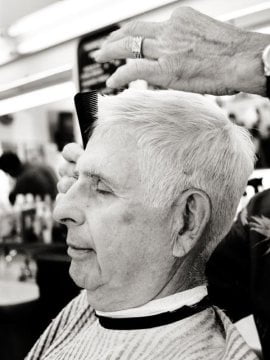
Last month, the Applegate marketing team started to take note of a strange phenomenon. During the first week of January, the brand’s hotdogs had their highest sales week ever at Whole Foods Market.
“You don’t expect that people’s New Year’s resolution is, ‘I’m going out to get a hotdog,’” says Nicole Glenn, vice president of marketing and R&D for the Hormel-owned organic processed meats maker. Sales were up 31% over the previous five weeks at the high-end grocer. Meanwhile, shipments of Applegate’s no-sugar bacon that had been launched in July skyrocketed, shooting up 88% over the same period at all supermarkets. Traffic to the brand’s website was up 15% since December, and its Instagram followers jumped 3,000.
The reason consumers were flocking to Applegate’s products and pages? The brand had announced a licensing partnership with the Whole30 in December, and followers of the rigid eating plan were stocking up on the hotdogs and bacon that were now being touted as compliant with the program.
The link was “pretty well correlated,” explains Glenn, who herself is in the middle of doing her second Whole30.
You would know if you have any friends or loved ones on the Whole30; one of its defining elements is that people on the program can’t help but talk about it. Do not blame them. Trying to get through a 30-day period without eating added sugar, alcohol, grains, legumes, dairy, MSG, sulfites, baked goods, or junk foods requires such an enormous amount of effort that it’s often all they have on the brain.
The program, which is a spinoff of the Paleo diet, is the brainchild of Melissa Hartwig and her ex-husband Dallas. The two developed the Whole30 in 2009 when Dallas, who was struggling with shoulder pain, started to examine the inflammatory properties of certain foods. The Hartwigs decided that for 30 days they would stop eating all the foods that Dallas identified as potential triggers, and then reintroduce them one at a time to determine which were causing issues. Hartwig says during the experiment her mood improved, her energy skyrocketed, and it “profoundly changed my relationship with food.”
The Whole30 now has such a following that Hartwig currently has two books on The New York Times bestseller list, and meal kit company Blue Apron is selling a Whole30 option. Even New Jersey Senator Cory Booker is in the middle of it and “loving it.”
The public may be intrigued with the Whole30, but many nutrition professionals are less enthusiastic. A panel of health experts recently ranked it No. 37 out of 40 diets in U.S. News & World Report. “No independent research. Nonsensical claims. Extreme. Restrictive,” read the assessment.
“They hate us,” Hartwig says. “I can’t help but think that there’s money and politics.” For one thing, she doesn’t believe the Whole30 should be considered a weight-loss diet in the first place. “It mystifies me why we are lumped into that category,” she explains. Hartwig acknowledges that most people on the program lose some pounds, but she says that’s an added benefit—not the reason to do it. As for the nutrition science, Hartwig says that she has a group of registered dietitians and doctors she regularly consults with. “I’m definitely not going at this alone,” she adds.
The doctors, dieticians, and professors Fortune spoke with generally all had the same concerns: that the Whole30 eliminates foods that are actually healthy and key for weight loss like grains and legumes (“A stupid idea, frankly,” one nutritionist said); that it’s overly restrictive and therefore impossible to stick with; that it doesn’t teach good habits; that it problematically conflates an elimination diet—meant to help people determine which foods may be causing allergies and sensitivities—with a weight-loss diet; that it’s based on fake science.
“I was appalled,” says Sue Roberts, a professor of nutrition at Tufts. “It’s the hokiest thing.” Says Lisa Sasson, a professor of nutrition of at New York University’s, “It promises so much, and its promises are absolutely baseless.” David Katz, the director of the Yale-Griffin Prevention Research Center, says, “The restrictions are arbitrary and bizarre.”
Far from hurting the plan’s appeal, this kind of rejection from experts may actually be boosting its popularity. Gunnar Lovelace, co-founder and chief strategy officer of online organic and natural retailer Thrive Market, which has a partnership with Whole30, says that consumers today “don’t trust their traditional sources anymore.” Instead, people like Hartwig “have amazing communities getting more traffic often than established media brands.”
Diets like the Whole30 give us what science cannot, and that’s certainty, says Pierre Chandon, who is director of the Sorbonne INSEAD Behavioral Lab. “That’s what makes them appealing,” he adds. The rigidity is also part of the draw. “The U.S. is a country where you don’t have strong social norms about food,” he explains. He pointed to research showing that in France, for example, nearly half of the population eats lunch at 1 p.m., while Americans have no consensus; they might sit down to a midday meal anytime between 11 a.m. and 2 p.m. “You’re left making decisions on your own, and as a result you’re totally lost,” he says. The Whole30 can act as a guide, creating boundaries that make eating much simpler. Explains Roberts, “Subconsciously, people are trying to assemble a world where there’s just a much smaller number of choices. How to eat and stay in control just gets a lot easier.”
Nanette Jensen did her first Whole30 in 2013 after she was diagnosed with autoimmune disorder POTS. “I was searching for what I could do feel better,” she says. She had been to several doctors, but “I also totally believe that there’s an element that people have to take charge of their own life and health. It’s my way of doing my part.”
Jensen has now done the Whole30 three times: once with her sister, once on her own, and once with her husband. She and her sister now run a website called Whole Sisters and an Instagram feed with more than 89,000 followers—just one account of many that has helped to make the Whole30 Instagram famous.
“The power of the anecdote”—i.e. my Aunt Marie lost 20 pounds doing the program—“is incredibly strong,” says Jacob Riis, a lecturer in marketing at the Wharton School at the University of Pennsylvania. “It’s easier to convey anecdotes in the age of social media.”
While Jensen and her sister both lost about 10 pounds the first time they did the Whole30, she says she doesn’t like to consider it a diet. “It’s a way of life, or a diagnosis, or a way to teach you what to eat,” she explains. That may be at the crux of the Whole30’s popularity. It is the diet for the anti-dieting age—when consumers say they are interested in mindful and clean eating, and their overall health rather than a number on the scale.
Meanwhile, the conventional advice—reducing your caloric intake and not losing more than a pound a week—“has been around for so long, and we’re just so bored of hearing it,” says Tuft’s Roberts. To her, the rise of the Whole30 is a warning of sorts. “I’m a big believer of listening to consumers,” she explains. “If a lot of people are enjoying this program, I would ask, ‘What is it about this program that’s speaking to them?’” In her view, the rise of the Whole30 is, at least in part, the result of a nutrition community that is not completely aligned on what we should or should not be consuming. “It’s speaking to the great confusion out there,” she says. “It’s a hard time for consumers to work out what they’re going to eat.”
[“Source-fortune”]


















